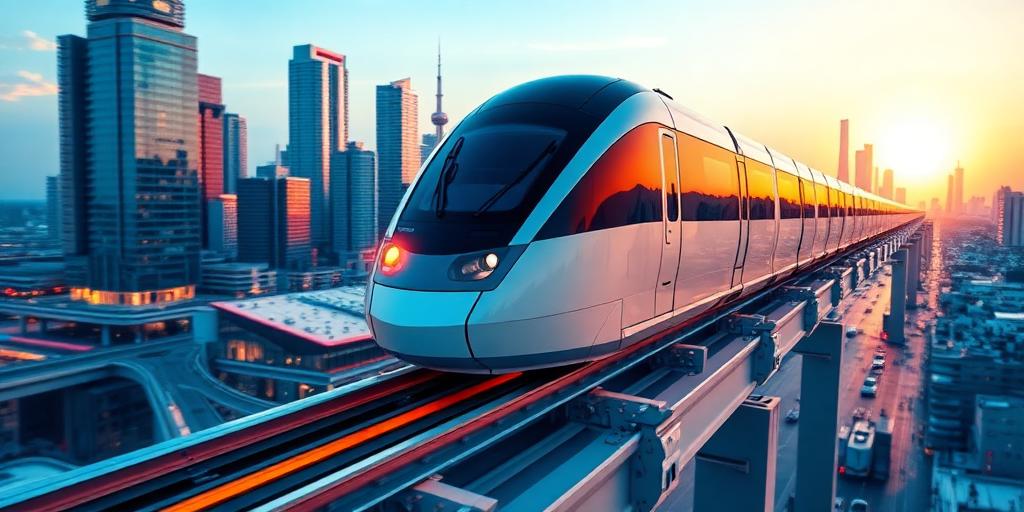The realm of transportation is perpetually evolving, driven by an incessant demand for greater speed, efficiency, and sustainability. Among the vanguard of these advancements, Maglev (magnetic levitation) trains stand out as a technology with profound potential to redefine how we travel. Far from a mere theoretical concept, Maglev trains represent a paradigm shift, promising to deliver unprecedented levels of performance and environmental benefits.
Understanding Maglev Technology
At its core, Maglev technology harnesses the fundamental principles of electromagnetism to levitate a train above its guideway, eliminating friction and enabling astonishing speeds. Powerful electromagnets within the train and guideway repel each other, lifting the vehicle, while other sets of magnets propel it forward. This frictionless movement is the key to achieving velocities that conventional wheeled trains simply cannot match.
Unlocking the Potential: Key Advantages
The inherent design of Maglev systems confers several compelling advantages, making a strong case for their broader adoption:
- Exceptional Speed: Without the drag of wheel-on-rail friction, Maglev trains can comfortably reach speeds exceeding 600 km/h (370 mph). This dramatically cuts travel times between major urban centers, effectively shrinking distances.
- Enhanced Efficiency: The absence of mechanical friction translates into lower energy consumption per passenger-mile at high speeds compared to conventional high-speed rail. This makes **maglev train technology benefits** particularly attractive for energy-conscious nations.
- Reduced Wear and Tear: With no physical contact between the train and the track, maintenance requirements for both the rolling stock and the infrastructure are significantly reduced, leading to lower operational costs over the long term.
- Environmental Benefits: Maglev systems are electrically powered, meaning zero direct emissions during operation. When paired with renewable energy sources, they offer a truly sustainable mode of **high-speed rail**.
- Safety and Comfort: The levitated design also enhances safety, as derailing is virtually impossible. Passengers experience a remarkably smooth and quiet ride, devoid of the vibrations common in traditional rail.
The Road Ahead: Challenges and Implementation
Despite these compelling advantages, the widespread deployment of Maglev trains faces considerable hurdles. The primary challenge lies in the immense upfront investment required for maglev infrastructure development. Building dedicated guideways, which are distinct from existing rail networks, demands significant capital expenditure and extensive land acquisition. Furthermore, integrating these new systems into established transport networks presents complex logistical and regulatory issues. While magnetic levitation transport advantages are clear, economic viability for mass adoption remains a critical consideration.
Currently, successful implementations like the Shanghai Maglev Demonstration Line showcase the technology's readiness. Countries such as Japan and South Korea are also actively pursuing Maglev projects, with Japan's Chuo Shinkansen aiming to connect Tokyo and Nagoya with a projected travel time of just 40 minutes by 2027.
The Future of High-Speed Transportation
As urban populations grow and the demand for rapid, sustainable transit intensifies, the potential of Maglev trains becomes increasingly undeniable. While initial costs are substantial, the long-term benefits in terms of speed, efficiency, and environmental stewardship offer a compelling vision for the future of high-speed rail. Overcoming the financial and logistical challenges will be crucial, but the prospect of a world connected by silent, ultra-fast Maglev networks is a powerful motivator for continued research, development, and investment in this transformative technology. The environmental impact of maglev could indeed be a game-changer for green transportation initiatives worldwide.









